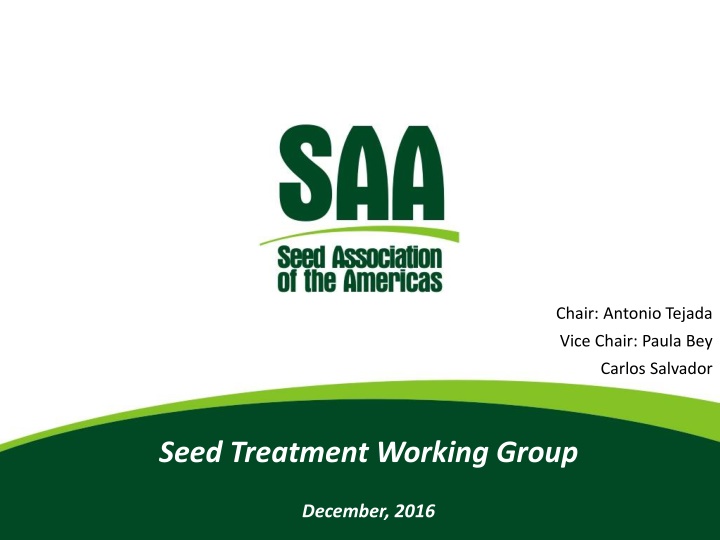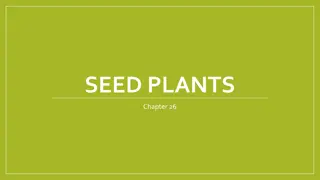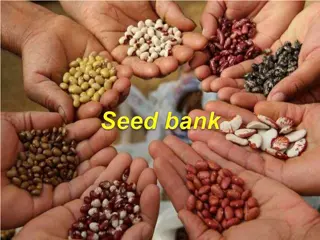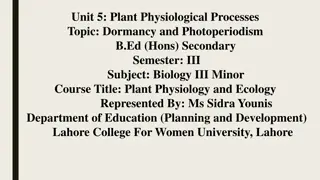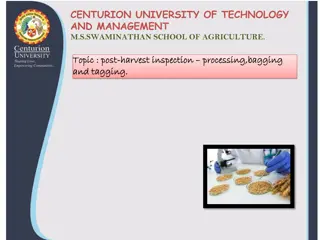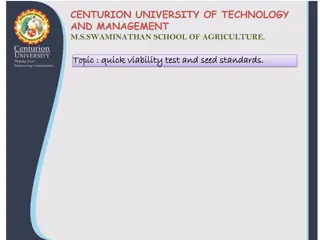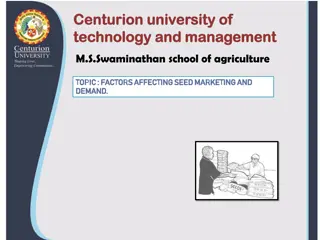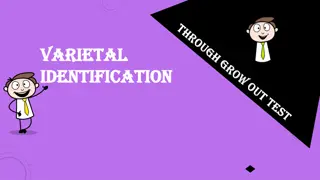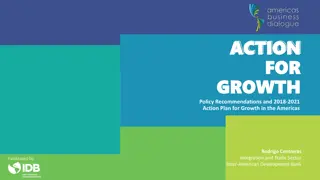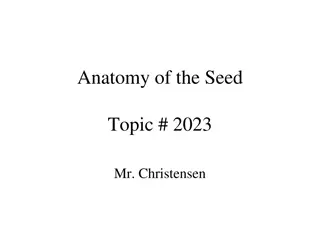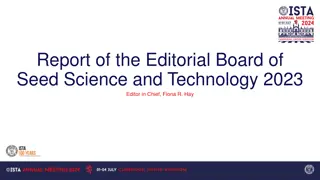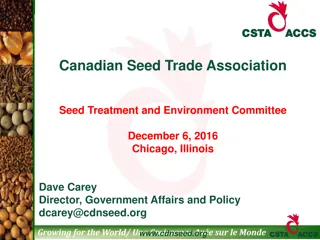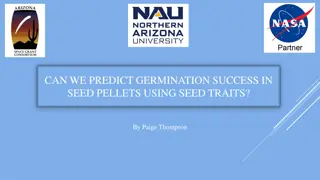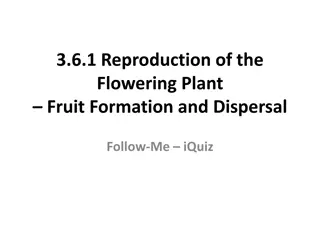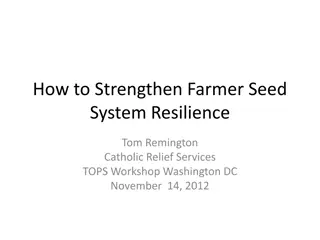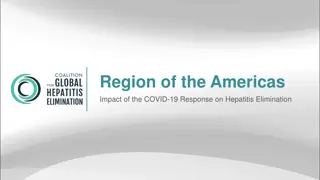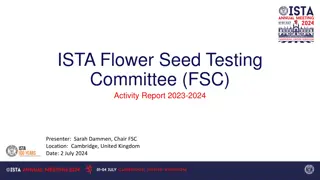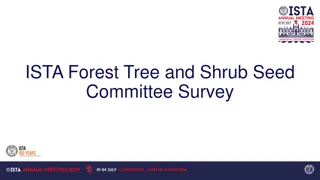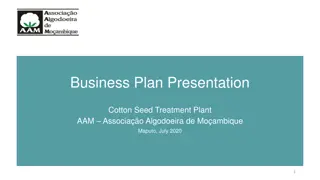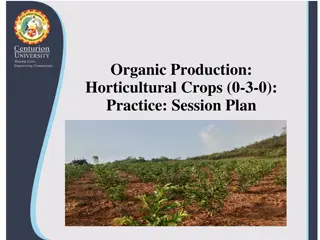Seed Treatment Working Group Overview in the Americas
The Seed Treatment Working Group (STWG) in the Americas focuses on facilitating treated seed trade, promoting safe seed technology use, and collaborating with regulatory agencies. Activities include identifying regulatory agencies, educational materials translation, and regulatory mapping. Updates from 2016 include a meeting in Santiago, Chile, involving participants from various countries.
Uploaded on Oct 01, 2024 | 2 Views
Download Presentation

Please find below an Image/Link to download the presentation.
The content on the website is provided AS IS for your information and personal use only. It may not be sold, licensed, or shared on other websites without obtaining consent from the author.If you encounter any issues during the download, it is possible that the publisher has removed the file from their server.
You are allowed to download the files provided on this website for personal or commercial use, subject to the condition that they are used lawfully. All files are the property of their respective owners.
The content on the website is provided AS IS for your information and personal use only. It may not be sold, licensed, or shared on other websites without obtaining consent from the author.
E N D
Presentation Transcript
Chair: Antonio Tejada Vice Chair: Paula Bey Carlos Salvador Seed Treatment Working Group December, 2016
SAA SAA Vision Vision The Seed Association of the Americas is the globally recognized leading authority, representing with a unified voice, all common interests for the seed industry in the Americas"
Seed Treatment Working Group Seed Treatment Working Group Main Purposes of STWG Facilitate Treated Seed Trade across the Americas Promote safe use of Seed Applied Technology
Seed applied technologies Identification of all Regulatory Agencies in SAA countries in the Continent, along with information of main contact within each agency: Database Official agencies to fill out a questionnaire pertaining to: i. Main Crops Seed being imported and exported Outcomes of the survey (www) ii. Label requirements for seed being imported and exported iii. Regulations on Biological products being applied to the seed iv. Looking for a way to harmonize labeling across crops, countries and regions Education and Training Materials i. Translation of some Seed Treatment User Guides and On Line Application Training courses: with the support from ISF and ASTA, on their already produced and published materials. ii. Next step is to take these courses down to other Seed Treatment Working Groups that are being formed in different SAA Members Countries.
Regulatory Activities Identification and Contact Info of the Regulatory Agencies from each Country in the Americas Database completed Questionnaire regarding Seed Trade, Regulatory & Labeling Information Mapping of key stakeholders: List of Seed Applied Technology Providers + regulatory agencies in each Country Scale up to ISF coordinate efforts
Questionnaire Preliminary Outcomes Main crops being moved across countries : Corn and Sorghum Most Vegetables Soy & Canola Grass and Legume Forage Seed Labeling of Seed Applied Technologies, overall is not a requirement in most reporting Countries of South America The majority of requirements are for phytosanitary documentation
2016 Activities update 2016 Activities update Face to Face Meeting in Santiago :: Chile; August :: topics Participants from: Canada, USA, Mexico, Colombia, Ecuador, Brazil, Paraguay, Peru, Uruguay, Argentina and Chile Sharing of local challenges being faced by Industry, as far as Seed Applied technologies go Sharing of Best Practices and joint activities locally, in order to avoid suspensions of Seed treatments being applied Important to maintain communication with the Phytosanitary Working Group, as Seed Applied Technologies are part of their discussions Continued inflow of information from local Associations to build the Regulatory information to be uploaded into the Data Base
Challenges being faced by local Associations Challenges being faced by local Associations Chile: New regulations coming into effect, where a seed applied product must be on the seed to prevent disease spread for incoming seed How can the STWG can help developing a guideline that can be shared with companies working in Chile Canada: Ontario is regulating the use of Neonics on Corn and Soy, with their goal to eleminate its use by 2017 Goverment looking to cancel registration on products (Neonics ) used on vegetables and other garden seed, affecting its flow into the country
Challenges being faced by local Associations Challenges being faced by local Associations Mexico: No Seed treatment Working group within AMSAC yet Double treatments being required by authotities, quemical and physical: Is this really necesary? Brazil: Need a process to get rid of empty seed bags, as there is nothing in place currently, which creates a big environmental hazzard (although is a requisit defined by law) how to do so? At what cost? Treated seed that was not planted which is the proper way to discard them? Not yet defined in BR 100% of Corn sedes are treated (compulsory by law) Uruguay: Treated sedes on grain exports a current problem
Challenges being faced by local Associations Challenges being faced by local Associations USA: A lawsuit was filed in US Federal Circuit Court to require US EPA to regulate seeds treated with pesticide products as pesticides through the planting process. Currently, EPA s regulatory authority covers the application of the pesticide on the seed. After that application USDA and the Federal Seed Law regulates seed. If the plaintiffs (environmental groups, NGOs and bee keepers) had won, EPA would regulate seed through planting and would likely require a permit to plant seed. The plaintiffs lost this case and the seed industry/grower groups won the case
Mitigation plans and STWG efforts Mitigation plans and STWG efforts Create and strengthen communication channels with regulatory authorities Involve CropLife in discussions with authorities to reduce future risks & more regulations on Seed Applied Technologies across the Americas Keep taking advantage of all Stewardship and Training documents available in different languages, created by ASTA and ISF (eg: AR & BR) Take advantage of available resources in different countries where proper handling, application and use of seed treatments and treated seed can be shared with industry, distributors and producers SAA to gather all this information and through the ST WG scale down to its members
Mitigation plans and STWG efforts Mitigation plans and STWG efforts Strengthen communication with the Phytosanitary groups, not only within SAA, but also, within local associations Consistent messaging on the benefits of Seed applied technologies across all Seed Associations, Local, Regional and Global
Activities going forward Activities going forward Have communication f rums across the Americas with industry, authorities and general public Create a list of products being used most commonly on seed moving across countries Work more in conjunction with CropLife and Authorities across the Americas Include new technologies within the working group, such as Biologicals/Natural products, as well as, seed treatment application technologies Promote the use of documents and information gathered and uploaded to the SAA website for its Members
Thank you for your attention! and Join SAA! www.saaseed.org
